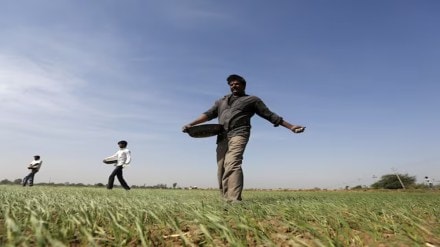The government’s move to rein in the subsidies after being liberal with these in the Covid period and its immediate aftermath is what has led to instances of shortage of di-ammonium phosphate (DAP) in many parts of the country, industry and trade sources said.
Global prices of the soil nutrient, which is vital for the winter crops during early sowing stages, have surged in recent months.
Industry sources told FE that due to supply disruption in the Red Sea, landed cost of DAP in the country has increased by 26% from $ 510/tonne in May to $ 645/tonne or around Rs 54,000/ tonne at present. While the government has announced a subsidy of Rs 21,911/tonne along with the maximum retail price (MRP) of Rs 27,000/tonne, this has proven to be uneconomical for fertiliser companies.
The MRP of DAP has remained at the same level since the Covid period.
In a bid to improve availability, the fertiliser ministry has offered an additional subsidy of Rs 3500/tonne for DAP or special package costing Rs 2625 crore to cover rising cost during April-December, 2024-25 to make the price sustainable for companies for procurement of DAP. However, trade sources said with the rise in global prices of DAP, such a hike has become uneconomical.
According to Fertiliser Association of India data, imports of DAP during April-September of the current fiscal have declined by 43% to 1.96 MT from 3.45 MT during the same period in 2023-24. The domestic production of DAP has declined by 7% 2.15 MT during the first half of the current fiscal.
At the beginning of season on October 1, carry forward stock was around 1.6 MT of DAP against around 3 MT of DAP in the previous year thus several states have reported shortage in availability of the soil nutrient crucial prior to commencement of rabi sowing especially in the case of wheat.
The government has stated that DAP imports were impacted due to Red Sea crisis since the beginning of the year, as ships are rerouted and take an additional 6500 km through the cape of Good Hope, South Africa thus taking an additional 14 – 45 days for the consignment to reach Kandla port.
“The systemic inventory for DAP has been low, which can cause availability issues; while for other fertilisers, it remains at comfortable levels. The profitability of DAP is under pressure, which has resulted in lower imports, leading to lower inventory levels,” consulting firm ICRA has said in a report on the Indian fertiliser industry.
The fertiliser ministry has assessed 5.5 MT of DAP usage for the forthcoming rabi season out of which 60% is being imported from countries such as Russia, Morocco, Saudi Arabia, Jordan, Egypt and China. The annual domestic production of DAP is around 4.5 – 4.8 MT against demand of 10 to 11 MT.
“In last three months, we have tried the longer routes to ensure adequate supply of DAP although availability is impacted,” Rajat Kumar Mishra, secretary, department of fertiliser has recently said at national rabi conference while stressing micro-management of supplies of non-urea fertiliser.
In September, to ensure supplies of non-urea soil nutrients at a reasonable price to farmers, the cabinet had approved Rs 24,474 crore subsidy on phosphatic and potassic (P&K) fertilisers for the forthcoming rabi season-2024-25 which is an increase of 10% on year.
The fertiliser ministry has stated that domestic production of DAP and NPK fertiliser is running at optimum level. “The department is continuously monitoring state requirements and import flows to manage the situation effectively and intensive efforts have been made by the department of fertilizers to augment the availability substantially during Sept–Nov, 2024,” according to an official note.
The government announces subsidies under the NBS mechanism twice a year before the commencement of kharif and rabi crops sowing.
Retail prices of phosphatic and potassic (P&K) fertilisers, including DAP were ‘decontrolled’ in 2010 with the introduction of a ‘fixed-subsidy’ regime as part of NBS mechanism.
